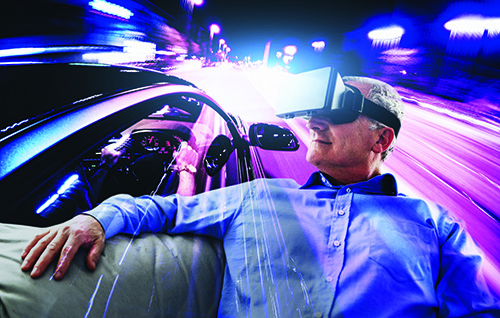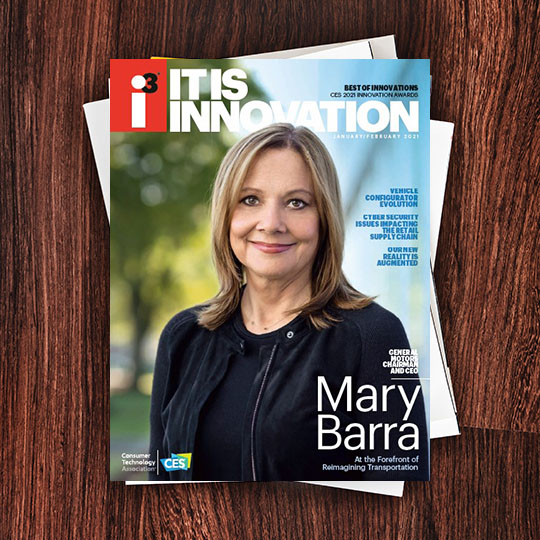
“From day one we’ve operated with a focus on who our consumer is going to be — individuals who tend to be really into technology, into a digital existence,” says Derek Jenkins, vice president of design at Lucid, based in Newark, CA. But Lucid also believes the way cars are purchased at dealerships is “quite frankly broken,” and this “led us to what we’ve been calling the digital journey.” It is how a consumer who knows nothing about Lucid can discover and “learn an immense amount about the brand, the product, the people behind the product and then dive deeper into this online configurator, which itself stretches the boundaries of what can be done,” Jenkins explains.
At CES 2020, Jenkins was introduced by an auto industry colleague to ZeroLight, Ltd., a supplier of cloud-based 3D visualization technology that has helped develop configurators and VR shopping experiences for Audi, BMW, Lamborghini, Nissan, Porsche and Volkswagen. From that point the conversation progressed to “how much interaction could we create, how much volumetric feeling could we give to the environment,” he says. “Most configurators today are pretty basic, especially when you compare them to the digital and online experiences we have through gaming. Why is there this tremendous gap between, let’s say, Gran Turismo or Forza when I play online in terms of visuals and experience as opposed to configurators? Why can’t we work to close that gap? It’s not just an environment to show a car in different colors. It’s a brand experience.”
So, like a videogame, the Lucid configurator allows customers to play with their car on-screen: opening the doors to see the interior, retracting the below-dashboard center display to unveil a storage compartment, turning the headlights on or off, and rotating the vehicle for a 360-degree view.
Someday, Jenkins says he imagines deeper engagement with the virtual car because “there’s more features that we can make functional, that we haven’t yet done” — for example, showing luggage being placed in the trunk to illustrate the vehicle’s cargo capacity.
Lucid plans to introduce accessories such as a roof rack and could visually integrate these into the configurator. “The long-term future goes far beyond that, where we could start to see the car in different environments as we launch the car in other markets around the world,” Jenkins says. “If I’m gaming and I choose a particular sports car, I can take it on all the racetracks around the world.”
But Lucid is coupling the online experience with a VR experience at its planned dealerships, which are called Studios. When the consumer finishes configuring a vehicle online, he or she is issued a code, which is used at the Studio space to retrieve it from the Lucid cloud server where it’s stored. Donning an HTC Vive VR headset that is wired to a two-seat or four-seat platform, he or she can then sit virtually anywhere in the configured vehicle’s cabin to explore its interior features. Jenkins says, “it’s a really effective tool to bridge the gap between the online experience and the physical retail experience.”
“The configurator should be a playful element,” says Candido Peterlini, head of digital marketing at Volkswagen AG in Wolfsburg, Germany. Thus, Peterlini adds, VW has linked it to interactive advertising: When a customer builds a vehicle in the configurator, the car created will be subsequently featured in the banner ads he or she sees at social media websites. This linkage rolled out in October for testing in Spain and the United Kingdom (UK).
The configurator should be a playful element.Candido Peterlini Head of Digital Marketing, Volkswagen AG
Its configurator also uses videogame technology to render an animated reproduction of a car on the customer’s screen in real-time. And it also generates a code that the customer can take to the dealer, to order the vehicle exactly as configured.
VW has also created what it calls a “Visualizer” being tested in Sweden that offers a similar 360-degree view. It eventually will be fully animated like Lucid’s, Peterlini says.
“It’s ongoing work,” Peterlini says. “We run user tests regularly and we know what you deliver today is obsolete in three or five months. The car experience must evolve from a technical point of view but also from an emotional point of view, and we are working on both sides.”
Likewise Nissan plans to incorporate better, more game-like realtime 3D rendering and AR experiences while balancing advanced functionality with fast download speeds that consumers have come to expect, says Allyson Witherspoon, U.S. chief marketing officer (CMO) at Nissan Group of North America in Franklin, TN. Work on these features is underway now, and the advent of 5G wireless communications is expected to help all of it function better on mobile devices, but for most customers those speeds are still many months or years away, Witherspoon says. She notes that Nissan’s visitor traffic from mobile devices eclipsed traffic from desktop computers in 2017 and has increased every year since.
That trend, along with the pandemic’s impact on sales, led Nissan to remake its configurator and consolidate it with all other shopping tools (including inventory search and trade-in value finders) in Nissan Shop@Home, which launched last May. The revision also brought a major upgrade to the configurator, which gained a basic level of real-time 3D rendering, faster load times, and the ability to personalize it for a user based on how he or she came to it (such as from an online ad), Witherspoon explains.
For the encore, Nissan is creating full end-to-end e-commerce that lets consumers truly complete a car purchase entirely online. “To me, it’s about creating the different paths, depending on how consumers want to shop,” Witherspoon says. The automaker anticipates introducing this in conjunction with a new vehicle in early 2021, she adds.
Witherspoon says, “It’s finding the specific ways that we can use [technologies] that are delivering the most value for consumers and are helpful for dealers as they’re using them, as well.”
Polestar, a spinoff of Volvo Cars, is taking another approach to bridging online and in-store sales — by refining the backend order fulfillment technology used by its dealerships, which it calls Spaces. “Now it’s becoming a table stake that you must have an online way of buying a car,” but there has been wide variability among the backend systems dealers use for various functions including factory order and inventory management and financing, notes Kyle Denlinger, head of IT and Digital at Polestar USA in Mahwah, NJ. So, to meet its objective of letting consumers configure and purchase one of its new vehicles entirely online or at one of its retail Spaces, Polestar reproduced all of these sales processes in one “single, unified retail tool that transitions the customer from the Polestar website to a place where the retailer can continue the transaction,” but it’s the same regardless of retailer, Denlinger says.
“What most other consumer products industries are doing is leveraging e-commerce and digital marketing to create that customer journey online,” says Sean Young, director of business marketing for manufacturing industry at NVIDIA in Fort Collins, CO — which makes the graphics processing chips (GPUs) underlying advanced configurators. To-date, car sales have been centered around dealerships and their personnel, but only because the auto industry hasn’t caught up with the times, Young asserts. “This is just getting started.”
Learn about car tech advances at CES 2021.

I3, the flagship magazine from the Consumer Technology Association (CTA)®, focuses on innovation in technology, policy and business as well as the entrepreneurs, industry leaders and startups that grow the consumer technology industry. Subscriptions to i3 are available free to qualified participants in the consumer electronics industry.